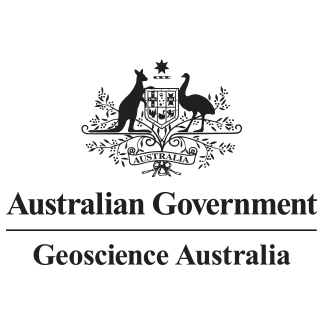Brief description
A `weighted geometric median’ approach has been used to estimate the median surface reflectance of the barest state (i.e., least vegetation) observed through Landsat-8 OLI observations from 2013 to September 2018 to generate a six-band Landsat-8 Barest Earth pixel composite mosaic over the Australian continent. The bands include BLUE (0.452 - 0.512), GREEN (0.533 - 0.590), RED, (0.636 - 0.673) NIR (0.851 - 0.879), SWIR1 (1.566 - 1.651) and SWIR2 (2.107 - 2.294) wavelength regions. The weighted median approach is robust to outliers (such as cloud, shadows, saturation, corrupted pixels) and also maintains the relationship between all the spectral wavelengths in the spectra observed through time. The product reduces the influence of vegetation and allows for more direct mapping of soil and rock mineralogy.
Reference: Dale Roberts, John Wilford, and Omar Ghattas (2018). Revealing the Australian Continent at its Barest, submitted.
Lineage
Maintenance and Update Frequency: annually
Statement: Large-scale image composites are increasingly important for a variety of applications such as land cover mapping, change detection, and the generation of high-quality data to parameterise and validate bio-physical and geophysical models. A number of compositing methodologies are being used in remote sensing in general, however challenges such as maintaining the spectral relationship between bands, mitigating against boundary artifacts due to mosaicking scenes from different epochs, and ensuring spatial regularity across the mosaic image still exist.
The creation of good composite images is a particularly important technology since the opening of the Landsat archive by the United States Geological Survey. The greater availability of satellite imagery has resulted in demand to provide large regional mosaics that are representative of conditions over specific time periods while also being free of clouds and other unwanted image noise. One approach is the stitching together of a number of clear images. Another is the creation of mosaics where pixels from different epochs are combined based on some algorithm from a time series of observations. This ‘pixel composite’ approach to mosaic generation provides a more consistent result compared with stitching clear images due to the improved color balance created by the combining of one-by-one pixel representative images. Another strength of pixel-based composites is their ability to be automated for application to very large data collections and time series such as national satellite data archives.
The Bare Earth pixel composite mosaic (BE-PCM) provides an approach that leverages high-dimensional statistical theory to deliver a spectrally consistent, artefact-free pixel composite product that is representative of the barest (i.e., least vegetation) state at each pixel over the specific time period.
The BE-PCM is derived from Landsat-8 OLI observations from 2013 to September 2018 corrected to measurements of NBAR surface reflectance (e.g., SR-N_25_2.0.0 or SR-NT_25_2.0.0). The data are masked for cloud, shadows and other image artefacts using the pixel quality product (PQ_25_2.0.0) to help provide as clear a set of observations as possible from which to calculate the BE-PCM.
The BE-PCM methodology and algorithm is given in Roberts, Wilford, Ghattas (2018). The technology builds on the earlier work of Roberts et al. (2017) where a method for producing cloud-free pixel composite mosaics using ‘geometric medians’ was proposed.
Note: The constituent pixels in the BE-PCM pixel composite mosaics are synthetic, meaning that the pixels have not been physically observed by the satellite. Rather they are the computed high-dimensional median of a time series of pixels which gives a robust estimate of the median state of the Earth at its barest (i.e., least vegetation).
References
Roberts, D., Wilford, J., Ghattas, O. (2018). Revealing the Australian Continent at its Barest. Submitted and under review.
Roberts, D., Mueller, N., Mcintyre, A. (2017). High-dimensional pixel composites from earth observation time series.
IEEE Transactions on Geoscience and Remote Sensing 55 (11), 6254-6264



